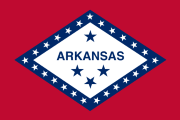
|
RC
|
||
|
Reading Fundamentals: Reading Fundamentals includes skills that can be applied to literary and informational texts.
|
||
|
|
||
|
|
||
|
Central idea
Supporting details
Theme
Literary texts
Informational passages
Nonfiction books
|
||
|
Central idea
Supporting details
Theme
Literary texts
Informational passages
Nonfiction books
|
||
|
Inference
Theme
Text evidence
Text evidence in literary passages
Text evidence in nonfiction passages
|
||
|
Inference
Theme
Text evidence
Text evidence in literary passages
Text evidence in nonfiction passages
|
||
|
Short stories
Literary passages
Informational passages
Nonfiction books
Compare texts
|
||
|
Short stories
Literary passages
Informational passages
Nonfiction books
Compare texts
|
||
|
Reading Literature: Reading Literary includes skills that are specific to literature.
|
||
|
Tone and mood
Short stories
Literary passages
|
||
|
Tone and mood
Short stories
Literary passages
|
||
|
Poetry
Short stories
Literary passages
|
||
|
Poetry
Short stories
Literary passages
|
||
|
|
||
|
|
||
|
Reading Information: Reading Information includes skills that are specific to non-fiction texts.
|
||
|
Text relationships
Arguments
Supporting details
Text analysis in nonfiction passages
|
||
|
Text relationships
Arguments
Supporting details
Text analysis in nonfiction passages
|
||
|
Text structure
Development of ideas
|
||
|
Text structure
Development of ideas
|
||
|
W
|
||
|
Style: Writing style includes different types of writing for different purposes.
|
||
|
Organization
Thesis statements
Author's purpose
Supporting evidence
Counterclaims
Logical fallacies
|
||
|
Organization
Thesis statements
Author's purpose
Supporting evidence
Counterclaims
Logical fallacies
|
||
|
Text structure
Organization
Development and support
Logical fallacies
Plagiarism
|
||
|
Text structure
Organization
Development and support
Logical fallacies
Plagiarism
|
||
|
Point of view
Descriptive details
Word choice and usage
Formatting
|
||
|
Point of view
Descriptive details
Word choice and usage
Formatting
|
||
|
Production: Writing production includes volume and clarity of writing and the writing process.
|
||
|
Author's purpose
Text structure
Organization
Development and support
|
||
|
Author's purpose
Text structure
Organization
Development and support
|
||
|
Thesis statements
Organization
|
||
|
Thesis statements
Organization
|
||
|
Complete sentences
Sentence types
Sentence variety
|
||
|
Complete sentences
Sentence types
Sentence variety
|
||
|
|
||
|
|
||
|
Organization
Revision
Editing
Complete sentences
Sentence variety
Parallel structure
Pronouns
Nouns
Subject-verb agreement
Verb tense
Adjectives and adverbs
Comparatives and superlatives
Misplaced modifiers
Commas
Semicolons, colons, and commas
Dashes, hyphens, and ellipses
Capitalization
Formatting
Plagiarism
|
||
|
Organization
Revision
Editing
Complete sentences
Sentence variety
Parallel structure
Pronouns
Nouns
Subject-verb agreement
Verb tense
Adjectives and adverbs
Comparatives and superlatives
Misplaced modifiers
Commas
Semicolons, colons, and commas
Dashes, hyphens, and ellipses
Capitalization
Formatting
Plagiarism
|
||
|
|
||
|
|
||
|
Formal style
Adjectives and adverbs
Comparatives and superlatives
Plural and possessive nouns
Pronouns and antecedents
Subject and object pronouns
Reflexive pronouns
Relative pronouns
Verbals
Subject-verb agreement
Past, present, and future tense
Progressive and perfect tense
Conjunctions
Misplaced modifiers
Restrictive and nonrestrictive elements
Commas
Semicolons, colons, and commas
Dashes, hyphens, and ellipses
Capitalization
Formatting
Complete sentences
Plagiarism
|
||
|
Formal style
Adjectives and adverbs
Comparatives and superlatives
Plural and possessive nouns
Pronouns and antecedents
Subject and object pronouns
Reflexive pronouns
Relative pronouns
Verbals
Subject-verb agreement
Past, present, and future tense
Progressive and perfect tense
Conjunctions
Misplaced modifiers
Restrictive and nonrestrictive elements
Commas
Semicolons, colons, and commas
Dashes, hyphens, and ellipses
Capitalization
Formatting
Complete sentences
Plagiarism
|
||
|
Research: Research includes identifying a topic, gathering information, and assessing sources.
|
||
|
V
|
||
|
Vocabulary: Vocabulary includes understanding and using words to communicate effectively.
|
||
|
Prefixes
Suffixes
Greek and Latin roots
Context clues
Synonyms and antonyms
Reference materials
Multiple-meaning words
Word choice and usage
Analogies
|
||
|
Prefixes
Suffixes
Greek and Latin roots
Context clues
Synonyms and antonyms
Reference materials
Multiple-meaning words
Word choice and usage
Analogies
|
||
|
Connotation and denotation
Word choice and usage
|
||
|
Connotation and denotation
Word choice and usage
|
||
|
Tone
Figures of speech
Rhyme scheme
|
||
|
Tone
Figures of speech
Rhyme scheme
|
||
|
L
|
||
|
Structure: Language structure involves correct use of parts of speech and creating sentences in speaking and writing, including how the arrangement of words within sentences impacts the meaning.
|
||
|
Plural nouns
Plural and possessive nouns
Direct and indirect objects
|
||
|
Plural nouns
Plural and possessive nouns
Direct and indirect objects
|
||
|
Reflexive pronouns
Relative pronouns
|
||
|
Reflexive pronouns
Relative pronouns
|
||
|
Verb tense
Verb mood
Active and passive voice
Subject-verb agreement
Linking verbs
|
||
|
Verb tense
Verb mood
Active and passive voice
Subject-verb agreement
Linking verbs
|
||
|
Adjectives
Adverbs
|
||
|
Adjectives
Adverbs
|
||
|
Dependent clauses
Compound and complex sentences
Conjunctions
Conjunctive adverbs
|
||
|
Dependent clauses
Compound and complex sentences
Conjunctions
Conjunctive adverbs
|
||
|
Phrases
Clauses
|
||
|
Phrases
Clauses
|
||
|
Conventions: Conventions involve the correct use of mechanics in writing.
|
||
|
Frequently confused words
Regular plurals
Possessive nouns
Comparatives and superlatives
Homophones
Irregular past tense
|
||
|
Frequently confused words
Regular plurals
Possessive nouns
Comparatives and superlatives
Homophones
Irregular past tense
|
||